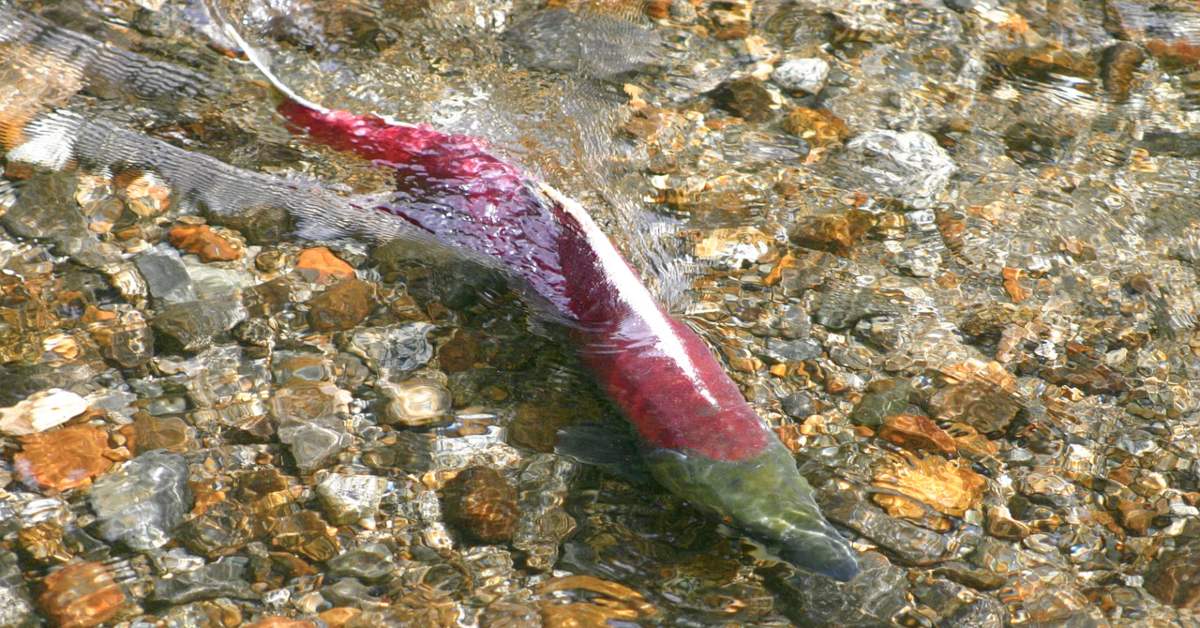Aquaculture, or fish farming, is an element of modern food production. It provides food to the masses while reducing our reliance on traditional agricultural methods. In fact, almost half of all fish consumed in the US comes from aquaculture operations.
But what about the types of salmon that are raised in these operations? Are they as good for your health as wild salmon? What about the taste and texture? Are they as rich and delicious? And how do they compare in price?
Ocean-farmed salmon is a farmed fish that is raised in large net pens or cages, and it accounts for nearly 70% of the total salmon production globally. The production of ocean-farmed salmon is growing at a rate of about 7% per year and is expected to continue to grow into the future.
The first commercial salmon farms were established in Norway in the early 1980s, but ocean-farmed salmon did not appear on store shelves until 1986. Today, most of the ocean-farmed salmon comes from Chile, Canada and Scotland.
The Atlantic salmon and the Pacific (or Chinook) salmon are two of the most well-known species in the salmon family. The names are quite self-explanatory, one originates from the Atlantic Ocean, while the other is native to the Pacific Ocean.
If you are a fish connoisseur then you may notice that there are some subtle differences between these two species. In this article we will compare these two types of salmon to help you understand what separates them from each other.
Pacific Salmon
Pacific salmon (Oncorhynchus spp) are anadromous fish, meaning they are born in freshwater, migrate to the ocean, then return to freshwater to reproduce. There are seven species of Pacific salmon: chinook, chum, coho, pink, sockeye, steelhead, and cutthroat trout. An estimated five million adult salmon return to the Susitna River every year to spawn.
Salmon are a keystone species because they provide critical marine ecosystem services such as maintaining populations of other species in the marine food web and providing nutrients for the growth of other species.
Salmon has played a prominent role in the cultures of many indigenous peoples of the Pacific Northwest Coast, who have been fishing for them for thousands of years. The first Europeans to reach the Pacific Northwest coast noticed the presence of large numbers of fish that appeared to be smelt.
Atlantic Salmon
Atlantic salmon account for over 95 percent of the ocean-farmed salmon produced, with most of them raised in ocean farms on the Pacific coast of Canada and Chile. Atlantic salmon have high farm survival rates, which can be contributed to the efficient way they convert food to body weight, and their ability to adapt to farming techniques.
The Atlantic Salmon (Salmo Salar) is a species of fish in the family Salmonidae. It is widely distributed and it has become an invasive species in many parts of the world. It is sometimes confused with other species of the genus Salmo such as S. trutta (trout), S. pretiosa (huchen), and S. alpinus (char, Dolly Varden). The Atlantic salmon is generally outgrowing Pacific salmon by a significant amount, with a maximum reported size of 72 kg (160 lb) in weight and 122 cm (48 in) in length.
Atlantic salmon are native to both the north and south coasts of Europe, such as Scottish salmon and Norwegian salmon, but have been introduced to other parts of the world, including North and South America, Australia, and New Zealand. The Pacific species (Oncorhynchus gorbuscha) was introduced into the Great Lakes of North America for sport fishing.
The distinctive coloration of adult salmon is due to pigments, mainly carotenoids, deposited in the flesh by the fish as they eat other fish. The coloration of young fish is determined by the water in which they live, often resembling the adults of their particular stream or river.
Salmon have been artificially propagated since the late 1800s, and overfishing has reduced wild populations dramatically. Restoring habitats and replenishing the population is a cause that we are deeply committed to.
If you’d like to know more about salmon, sustainable aquaculture, and other interesting facts about this cornerstone species, please explore our blog and write to us with any further questions.

